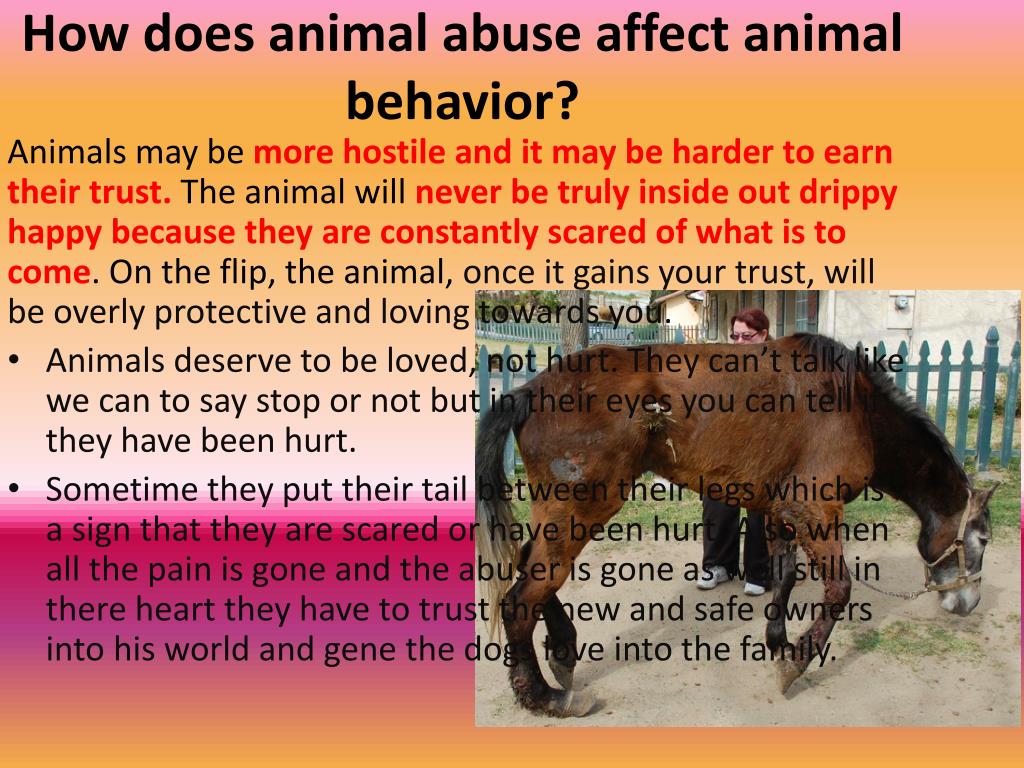Animal cruelty is an insidious issue that transcends mere acts of violence against animals; it reverberates throughout the community, creating an ecosystem of distress that impacts not only the creatures at its center but also the fabric of human society. To understand how animal cruelty affects a locality, we must unearth the multifaceted consequences that ensue, leading us to confront a reality often overlooked. The immediate aftermath of animal abuse reverberates through the community, manifesting in psychological, social, and economic dimensions that warrant our attention.
Firstly, one of the most alarming consequences of animal cruelty is the psychological impact it has on the community’s inhabitants. Observing or being aware of such atrocities can cultivate an atmosphere steeped in fear and desensitization. Communities that tolerate or overlook acts of animal abuse may inadvertently foster a culture of violence. Studies have indicated a correlation between animal abuse and increased rates of violence against humans. The desensitization that stems from frequent exposure to violence can lead to apathy towards suffering, creating a milieu where empathy—the cornerstone of a harmonious society—wanes. This psychological degradation can seep into various facets of community life, including the upbringing of future generations, where values of compassion and stewardship towards all living beings are essential.
Furthermore, the social repercussions of animal cruelty are both profound and far-reaching. Communities that grapple with high rates of animal abuse frequently experience a breakdown of social cohesion. Trust among neighbors erodes as fear permeates the collective consciousness. When animal abuse incidents go unaddressed, they can escalate to larger social issues, including crime and social unrest. Individuals living in areas with rampant cruelty might exhibit an unsettling normalization of violence. Such environments may deter the positive engagement of community members, leading to isolation and an unwillingness to collaborate on local initiatives aimed at fostering a healthier society. This social fragmentation undermines the very essence of community spirit, which thrives on mutual care and support.
In addition to psychological and social dimensions, the economic implications of animal cruelty are significant. Communities plagued by animal mistreatment can suffer economically in various ways. Animal cruelty can deter potential investments and tourism, as the perception of a locality steeped in cruelty is unattractive to both businesses and visitors. Moreover, local animal shelters may become overwhelmed with the consequences of neglect and abuse, necessitating the allocation of valuable community resources towards addressing a problem that could have been mitigated through prevention and public education. The financial strain of rehabilitating abused animals, coupled with the costs of enforcing animal welfare laws and providing community outreach, can drain municipal budgets—money that could otherwise be allocated to enriching community programs and infrastructure.
Schools, too, exhibit the ripple effect of animal cruelty on community dynamics. Educational institutions can serve as powerful platforms for instilling values of empathy and kindness. However, if the surrounding environment is rife with violence against animals, the ethos of compassionate education may be undermined. Children exposed to animal cruelty are often at risk of internalizing aggressive behaviors or harboring destructive tendencies. Engaging youth in programs that advocate for animal welfare can help mitigate these tendencies and foster responsibility and care, promoting a cycle of kindness that benefits both animals and humans. Cultivating a culture of respect for all living beings is an investment in the community’s future.
Legislation and community responses to animal cruelty also play a crucial role in shaping local dynamics. Communities that take a proactive stance against animal cruelty, instituting stringent laws and creating programs for prevention, are far more likely to thrive. Such measures foster a shared responsibility, encouraging residents to become allies in the fight against cruelty. A strong network of support, including partnerships between law enforcement, animal rights organizations, and community leaders, can create significant inroads into reducing instances of animal abuse. By raising awareness and providing accessible resources for reporting mistreatment, communities can dissolve the climate of fear and numbness that surrounds animal cruelty.
Moreover, the role of advocacy is indispensable. Local organizations dedicated to animal welfare tirelessly work to educate the public about the importance of treating animals with respect and kindness. These advocates strive not only to address the immediate needs arising from cases of abuse but also to instill long-term change. By organizing community events, workshops, and educational campaigns, they create an environment where compassion can flourish. Such advocacy is essential in building a community ethos where cruelty is actively resisted, and empathy becomes second nature. Local businesses can also engage in these efforts by supporting animal welfare initiatives, thereby exhibiting a commitment to the community’s well-being.
In summation, the impact of animal cruelty extends far beyond individual acts of maltreatment; it disrupts the very fabric of our communities. The psychological ramifications, social disintegration, and economic strain collectively illustrate a dire need for heightened awareness and action. We must foster environments rich in compassion, emphasizing the intrinsic value of all living beings. As we rally against animal cruelty, we simultaneously strengthen our communities, ensuring a brighter, more equitable future for both animals and humans alike.






